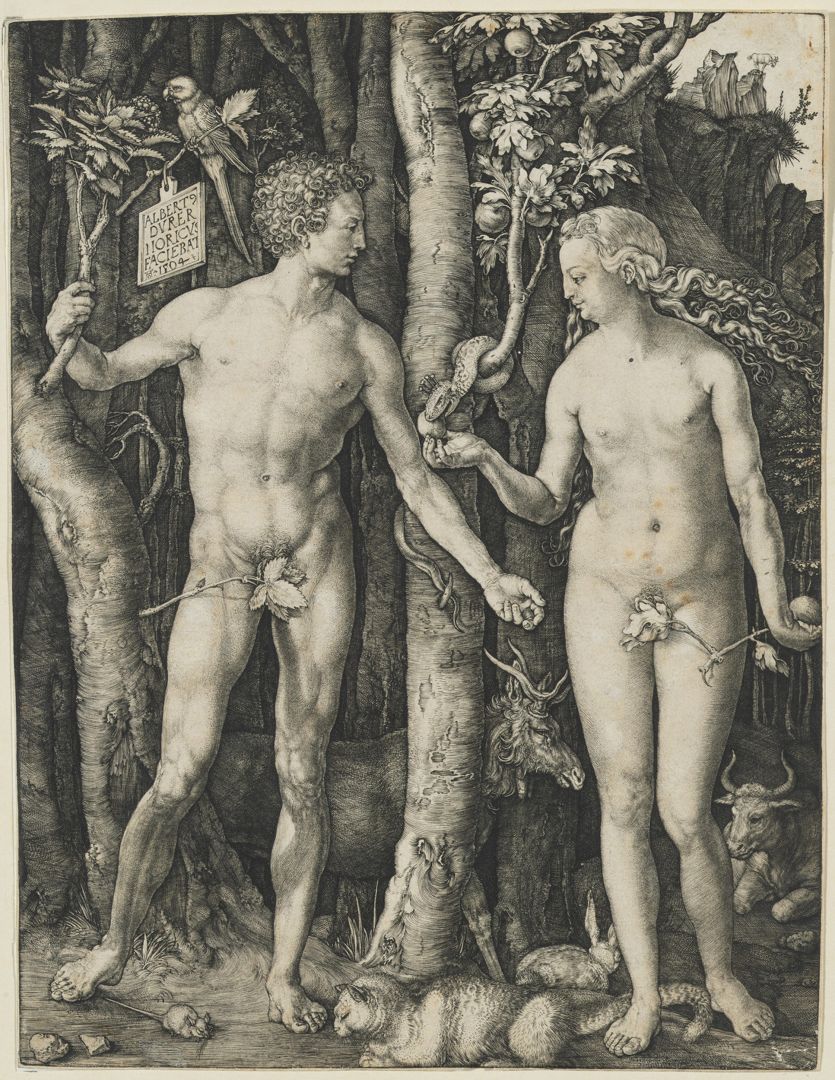
Adam and Eve
1504
Engraving
252 × 194 mm
Esterházy collection
Dürer’s researches into proportion arrived at full perfection with this print, embodying the ideal of the female and male figures. The artist made five proofs at different phases of the composition, and he drew the highest number of preparatory studies for this engraving. The world of Eden is evoked by the animals surrounding the figures, which, at the same time, also symbolize the four temperaments: the elk is set as the melancholic, the hare as the sanguine, the cat as the choleric, and the ox as the phlegmatic temperament. According to the theory of the four humours, originating in classical antiquity and still flourishing in the Renaissance, everyone is ranked into one of the basic temperaments. Classification is determined by the dominance of the four respective body fluids: sanguine, choleric, melancholic, and phlegmatic. The figures of Adam and Eve and the theory of the four humours were first connected by Hildegard von Bingen, a Benedictine abbess in the twelfth century. According to her theory, the dominant humours had influenced the temperament and character of human beings as a consequence of the Fall of Man.